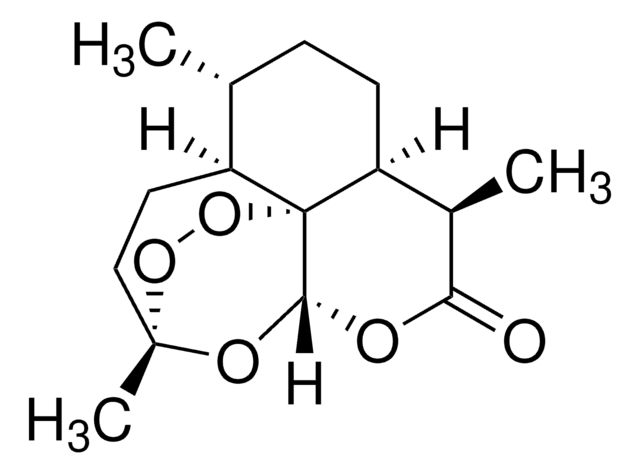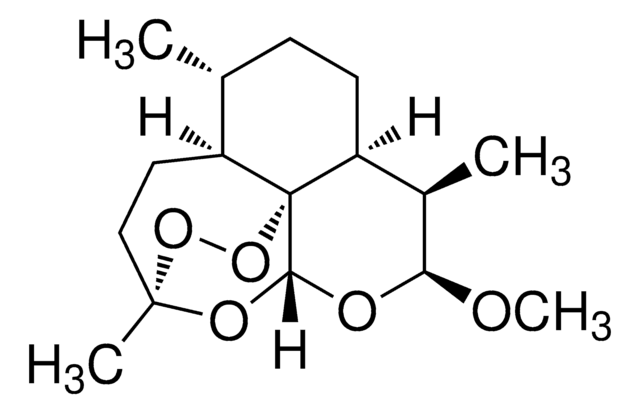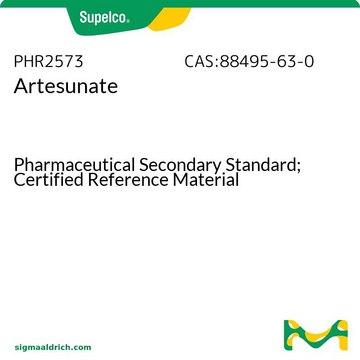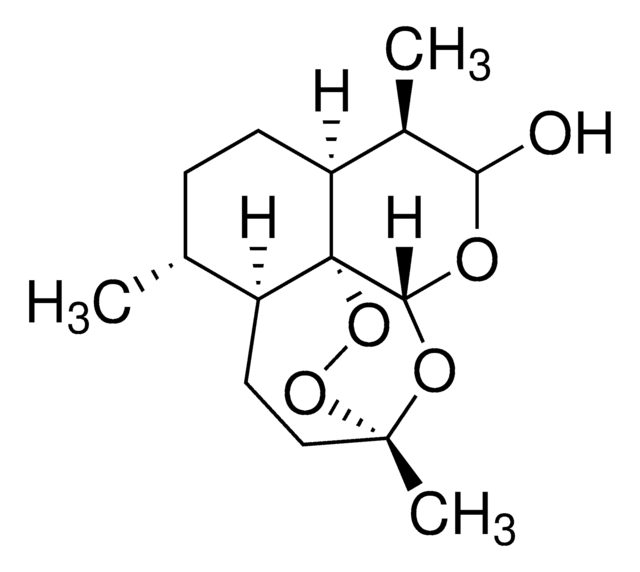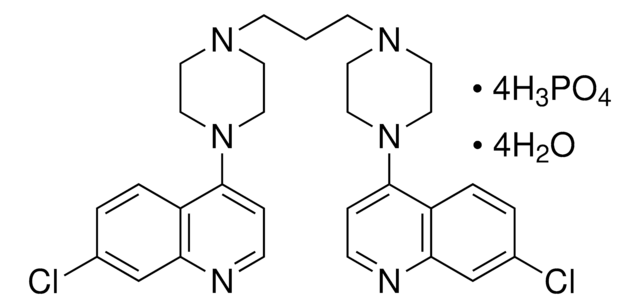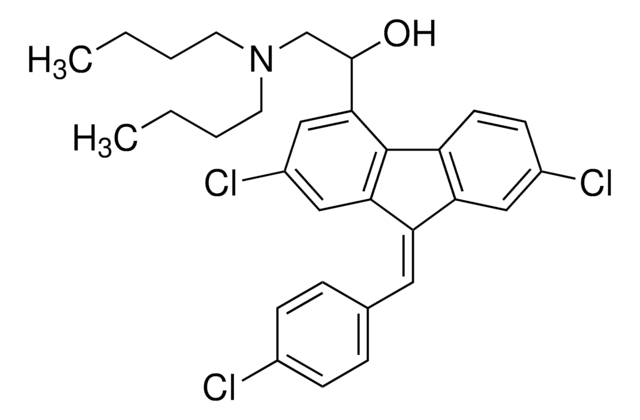A3731
Artesunate
from Artemisia annua
Synonym(s):
Artesunic acid, dihydroartemisinine-12-alpha-succinate, succinyl dihydroartemisinin
About This Item
Recommended Products
biological source
Artemisia annua
Quality Level
form
crystalline powder
color
white to off-white
solubility
acetone: 33.4 mg/mL
antibiotic activity spectrum
neoplastics
parasites
Mode of action
protein synthesis | interferes
storage temp.
room temp
SMILES string
O1OC2(O[C@H]3O[C@@H]([C@@H]([C@H]4[C@]31[C@H]([C@@H](CC4)C)CC2)C)OC(=O)CCC(=O)O)C
InChI
1S/C19H28O8/c1-10-4-5-13-11(2)16(23-15(22)7-6-14(20)21)24-17-19(13)12(10)8-9-18(3,25-17)26-27-19/h10-13,16-17H,4-9H2,1-3H3,(H,20,21)/t10-,11-,12+,13+,16+,17-,18?,19-/m1/s1
InChI key
FIHJKUPKCHIPAT-JQXDXKTESA-N
Looking for similar products? Visit Product Comparison Guide
General description
Application
- Unrevealing the therapeutic potential of artesunate against emerging zoonotic Babesia microti infection in the murine model.: This study explores the efficacy of artesunate in treating Babesia microti infection, a zoonotic disease, in mice. The findings suggest that artesunate significantly reduces parasitemia, indicating its potential as a therapeutic agent for zoonotic infections (Fazilani et al., 2024).
- Antitumour effects of artesunate via cell cycle checkpoint controls in human oesophageal squamous carcinoma cells.: The study investigates artesunate′s antitumor properties in oesophageal squamous carcinoma cells, highlighting its ability to regulate cell cycle checkpoints and inhibit cancer cell proliferation. These findings underscore artesunate′s potential in cancer therapy (Mao et al., 2024).
- 3D printing of multi-unit gastro-retentive tablets for the pulsatile release of artesunate.: This study presents a novel approach to drug delivery using 3D-printed gastro-retentive tablets for the pulsatile release of artesunate. The technology promises improved bioavailability and therapeutic efficacy of artesunate for various medical conditions (Yan et al., 2024).
Biochem/physiol Actions
Other Notes
Signal Word
Warning
Hazard Statements
Precautionary Statements
Hazard Classifications
Acute Tox. 4 Dermal - Acute Tox. 4 Inhalation - Acute Tox. 4 Oral
Storage Class Code
13 - Non Combustible Solids
WGK
WGK 3
Flash Point(F)
Not applicable
Flash Point(C)
Not applicable
Personal Protective Equipment
Choose from one of the most recent versions:
Certificates of Analysis (COA)
Don't see the Right Version?
If you require a particular version, you can look up a specific certificate by the Lot or Batch number.
Already Own This Product?
Find documentation for the products that you have recently purchased in the Document Library.
Our team of scientists has experience in all areas of research including Life Science, Material Science, Chemical Synthesis, Chromatography, Analytical and many others.
Contact Technical Service